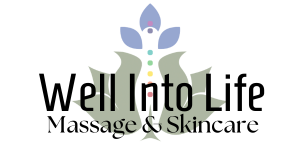Skincare Options
Customize your skincare service with our options to fit your individual needs.
Eveyone has different skincare needs, so we want to be able to provide you with the options that will tailor your experience at Well Into Life and make your treatment the most effective. We know that getting noticeable and long-lasting results is important to you, and so it’s our goal. We feel we’ve put together a list of options that will make your treatment experience more enjoyable and satisfying.
Remember, in order to make sure you select the right skincare options, it may be crucial to consult with a healthcare provider to determine whether any skincare treatment is suitable for your specific skin type, condition, and medical history. They can assess any contraindications, review potential risks, and provide personalized recommendations to ensure a safe and effective treatment.
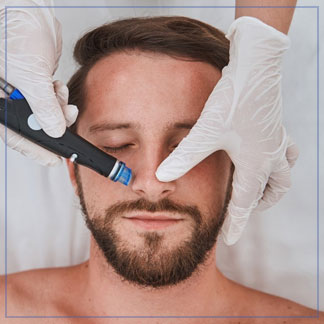
HydroDermabrasion
The benefits of hydrodermabrasion may include:
- Exfoliation: Hydrodermabrasion effectively removes dead skin cells, promoting cell turnover and revealing smoother, brighter skin.
- Hydration: The infusion of water and hydrating solutions helps to moisturize and plump the skin, reducing the appearance of fine lines and wrinkles.
- Extraction: Hydrodermabrasion can help to unclog pores and remove blackheads and other impurities, resulting in clearer, more refined skin.
- Improvement of skin texture: By exfoliating and hydrating the skin, hydrodermabrasion can help to improve the overall texture and tone of the skin, leaving it looking and feeling smoother and more youthful.
HydroDermabrasion might not be for you if you have any of the following condidtions:
- Active acne: Hydrodermabrasion can potentially exacerbate active acne lesions or spread bacteria, leading to further breakouts. It’s typically best to avoid hydrodermabrasion if you have active acne or severe acne-prone skin.
- Sensitive or irritated skin: Individuals with highly sensitive or irritated skin, such as those with rosacea, eczema, or psoriasis, may experience increased redness, inflammation, or discomfort following hydrodermabrasion.
- Sunburned skin: Sunburned skin is already inflamed and sensitive, and hydrodermabrasion can further irritate the skin and increase discomfort.
- Use of certain medications or treatments: Some medications or topical treatments, such as retinoids, oral isotretinoin (Accutane), or certain chemical peels, can thin the skin or increase sensitivity, making it more prone to irritation or injury during hydrodermabrasion.
- Skin infections or open wounds: Hydrodermabrasion should not be performed on areas of the skin with active infections, open wounds, cuts, abrasions, or other lesions. Doing so can increase the risk of infection and interfere with the healing process.
- History of keloid scarring: Individuals with a history of keloid scarring or excessive scarring may be at increased risk of developing hypertrophic scars following hydrodermabrasion.
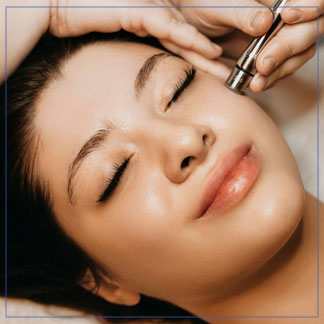
Diamond Dermabrasion (MicroDermabrasion)
The benefits of a Diamond Dermabrasion treatment may include:
- Enhances blood circulation
- Stimulates collagen production
- Purifies the skin and removes dead skin cells
- Diminishes wrinkles and acne scars
- Minimizes enlarged and congested pores
- Oxygenates and rejuvenates skin cells
- Firms the skin
- Renders a smooth and luminous complexion
- Utilizes natural elements and minerals
MicroDermabrasion might not be for you if you have any of the following conditions:
- Active acne: Microdermabrasion can potentially exacerbate active acne lesions or spread bacteria, leading to further breakouts. It’s typically best to avoid microdermabrasion if you have active acne or severe acne-prone skin.
- Sensitive or irritated skin: Individuals with highly sensitive or irritated skin, such as those with rosacea, eczema, or psoriasis, may experience increased redness, inflammation, or discomfort following microdermabrasion.
- Sunburned skin: Sunburned skin is already inflamed and sensitive, and microdermabrasion can further irritate the skin and increase discomfort. It’s advisable to wait until the sunburn has healed before undergoing microdermabrasion.
- Use of certain medications or treatments: Some medications or topical treatments, such as retinoids, oral isotretinoin (Accutane), or certain chemical peels, can thin the skin or increase sensitivity, making it more prone to irritation or injury during microdermabrasion.
- Skin infections or open wounds: Microdermabrasion should not be performed on areas of the skin with active infections, open wounds, cuts, abrasions, or other lesions. Doing so can increase the risk of infection and interfere with the healing process.
- History of keloid scarring: Individuals with a history of keloid scarring or excessive scarring may be at increased risk of developing hypertrophic scars following microdermabrasion.
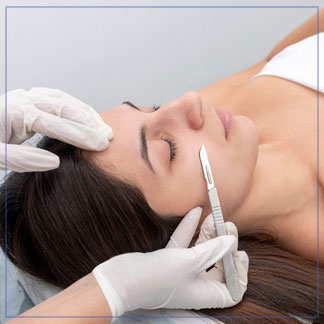
Dermaplaning
Dermaplaning is a non-invasive cosmetic procedure designed to remove dead skin cells and peach fuzz from the face using a scalpel, resulting in a brighter and smoother complexion. Its advantages incudes softer and smoother skin, a smoother canvas for makeup application, gentle exfoliation, the removal of peach fuzz, and a more radiant appearance.
Benefits of a dermaplane treatment may include:
- Smoother skin texture: Dermaplaning effectively removes dead skin cells and surface debris, leaving the skin feeling smoother and softer immediately after treatment. It helps to improve skin texture and promote a more youthful appearance.
- Enhanced product absorption: By removing the outermost layer of dead skin cells, dermaplaning allows skincare products to penetrate more deeply into the skin. This can enhance the efficacy of serums, moisturizers, and other skincare products, leading to better results.
- Brighter complexion: Dermaplaning helps to reveal fresh, new skin cells and promote cell turnover, resulting in a brighter, more radiant complexion. It can help to reduce the appearance of dullness and uneven skin tone.
- Reduced appearance of fine lines and wrinkles: Dermaplaning can help to minimize the appearance of fine lines and wrinkles by exfoliating the skin and stimulating collagen production. Over time, regular dermaplaning treatments may help to improve the overall texture and firmness of the skin.
- Diminished appearance of acne scars: Dermaplaning can help to improve the appearance of acne scars by exfoliating the skin and promoting cell turnover. It can help to smooth out the texture of the skin and reduce the visibility of acne scars over time.
- Temporary hair removal: In addition to exfoliating the skin, dermaplaning also removes vellus hair (peach fuzz) from the surface of the skin. This can create a smoother, more even complexion and provide a perfect canvas for makeup application.
- Instant results with no downtime: Dermaplaning is a quick and relatively painless procedure. Unlike some other skincare treatments, dermaplaning typically requires no downtime, and clients can immediately resume their normal activities after treatment.
Dermaplaning may not be for you if you currently have the following conditions:
- Active acne: Dermaplaning can potentially exacerbate active acne lesions or spread bacteria, leading to further breakouts. It’s typically best to avoid dermaplaning if you have active acne or severe acne-prone skin.
- Sensitive or irritated skin: Individuals with highly sensitive or irritated skin, such as those with rosacea, eczema, or psoriasis, may experience increased redness, inflammation, or discomfort following dermaplaning.
- Open wounds or lesions: Dermaplaning should not be performed on areas of the skin with open wounds, cuts, abrasions, or other active lesions. Doing so can increase the risk of infection and interfere with the healing process.
- Sunburned skin: Sunburned skin is already inflamed and sensitive, and dermaplaning can further irritate the skin and increase discomfort. It’s advisable to wait until the sunburn has healed before undergoing dermaplaning.
- Use of certain medications or treatments: Some medications or topical treatments, such as retinoids, oral isotretinoin (Accutane), or certain chemical peels, can thin the skin or increase sensitivity, making it more prone to irritation or injury during dermaplaning. It’s important to disclose any medications or treatments you are currently using to your esthetician before undergoing dermaplaning.
- History of keloid scarring: Individuals with a history of keloid scarring or excessive scarring may be at increased risk of developing hypertrophic scars following dermaplaning.
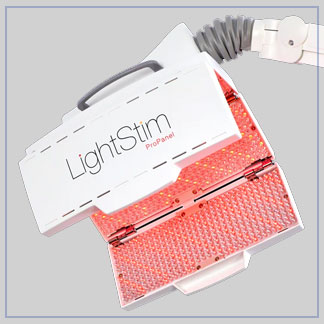
LED Light Treatment (LightStim ProPanel and Celluma Pro devices)
LED light treatments on the face involve using specific wavelengths of light to target various skin concerns and promote overall skin health. These treatments utilize different colors of LED light to penetrate the skin at different depths and have different effects:
- Red light: This wavelength is commonly used for anti-aging purposes as it stimulates collagen production, reduces the appearance of fine lines and wrinkles, and promotes skin firmness and elasticity.
- Blue light: Blue light therapy is often used to treat acne as it has antibacterial properties that can help kill acne-causing bacteria on the skin and reduce inflammation.
- Near-infrared: Near-infrared light therapy penetrates deeper into the skin and can help with wound healing, reduce inflammation, and improve overall skin health.
During our LED light treatment sessions, the skin is exposed to the selected wavelength of light (red, infrared, or blue) for up to 30 minutes. The treatment is non-invasive, painless, and requires no downtime. LED light therapy can be combined with other skincare treatments for enhanced benefits.
Our LED devices (both LightStim and Celluma) are FDA cleared medical devices to treat wrinkles, acne, and pain.
LED light treatments might not be for you if you have any of the following:
- Photosensitivity: Individuals who are sensitive to light or have a known photosensitivity disorder may experience adverse reactions to LED light therapy. This includes conditions such as lupus, porphyria, or certain medication-induced photosensitivity.
- Active skin infections: LED light therapy should not be performed on areas of the skin with active infections, such as bacterial, viral, or fungal infections. Doing so can exacerbate the infection and potentially spread it to other areas.
- Pregnancy: While LED light therapy is generally considered safe during pregnancy, some practitioners may recommend avoiding treatment (especially over the belly) during the first trimester or consulting with a healthcare provider before undergoing the procedure.
- Use of photosensitizing medications: Certain medications or topical treatments can make the skin more sensitive to light and increase the risk of adverse reactions to LED light therapy. These may include retinoids, antibiotics, medications used to treat acne or psoriasis, or recent steroidal injections.
- History of seizures: LED light therapy may involve flickering or pulsing light, which can trigger seizures in individuals with a history of epilepsy or other seizure disorders. It’s essential to discuss any seizure disorders or concerns with your healthcare provider before undergoing LED light therapy.
- Active skin cancer: LED light therapy should not be performed on areas of the skin with active skin cancer or suspicious lesions. It’s crucial to have any suspicious moles or lesions evaluated by a dermatologist before undergoing treatment.
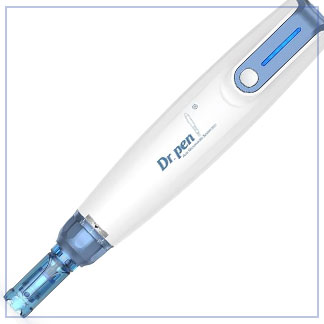
Nano Needling
Nano tip cartridges are used that feature silicone-tipped pins that create nanochannels on the skin, enhancing the absorption of skincare products. Unlike microneedling, which penetrates deeper into the dermis, nano-needling utilizes silicone-tipped cartridges that solely puncture the epidermis. Despite not reaching the deeper skin layers like microneedling, nano-needling still delivers significant anti-aging benefits. This method provides an efficient yet gentle means to address wrinkles, fine lines, uneven skin tone, and dullness. The nano channels formed during the treatment also facilitate better penetration of skincare products. Clients typically notice smoother and well-hydrated skin within days following their session. Additionally, nano-needling aids in firming loose skin and reducing swelling, promoting a youthful appearance. It is commonly employed to enhance skin tone and texture, diminish fine lines around the lips and eyes, and reduce enlarged pores.
Nano Needling might not be for you if you have any of the following:
- Active acne lesions: Nano-needling can potentially exacerbate active acne lesions or spread bacteria, leading to further breakouts. It’s typically best to avoid nano-needling if you have active acne or severe acne-prone skin.
- Skin infections or lesions: Nano-needling should not be performed on areas of the skin with active infections, open wounds, cuts, abrasions, or other lesions. Doing so can increase the risk of infection and interfere with the healing process.
- Eczema, psoriasis, or other inflammatory skin conditions: Individuals with inflammatory skin conditions may experience increased redness, irritation, or discomfort following nano-needling.
- Use of certain medications or treatments: Some medications or topical treatments, such as retinoids, oral isotretinoin (Accutane), or certain chemical peels, can thin the skin or increase sensitivity, making it more prone to irritation or injury during nano-needling.
- History of keloid scarring: Individuals with a history of keloid scarring or excessive scarring may be at increased risk of developing hypertrophic scars following nano-needling.
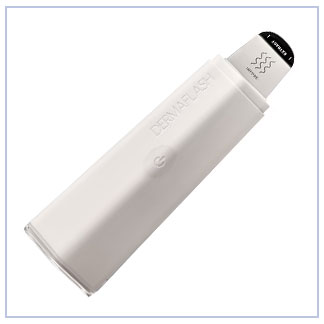
Ultrasonic Pore Extraction (skin scrubber)
This service uses ultrasonic technology to remove impurities, debris, and excess oil from the pores. During the process, a specialized handheld device emits ultrasonic vibrations that help loosen and dislodge dirt, oil, and dead skin cells that are trapped within the pores.
The ultrasonic waves create high-frequency vibrations, which gently exfoliate the skin’s surface and penetrate into the pores without causing damage or irritation. This loosening of debris allows for easier extraction and cleansing of the pores.
- Using a 35K Hz device
Ultrasonic Pore Extraction might not be for you if you have any of the following:
- Active acne lesions: Ultrasonic pore extraction can potentially exacerbate active acne lesions or spread bacteria, leading to further breakouts. It might be best to avoid the treatment if you have active acne or severe acne-prone skin.
- Inflammatory skin conditions: Individuals with inflammatory skin conditions such as eczema, psoriasis, or rosacea may experience increased redness, irritation, or discomfort following ultrasonic pore extraction.
- Sunburned or irritated skin: Ultrasonic pore extraction should not be performed on sunburned or irritated skin as it can exacerbate redness, discomfort, and potentially cause further damage.
- Skin infections or lesions: The treatment should not be performed on areas of the skin with active infections, open wounds, cuts, abrasions, or other lesions. Doing so can increase the risk of infection and interfere with the healing process.
- Use of certain medications or treatments: Some medications or topical treatments, such as retinoids, oral isotretinoin (Accutane), or certain chemical peels, can thin the skin or increase sensitivity, making it more prone to irritation or injury during ultrasonic pore extraction.
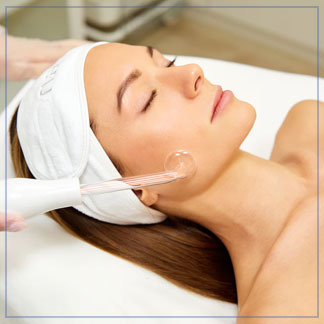
High Frequency Wand
- Voltage:40,000V
- Frequency:200~300Khz
The High Frequency Wand treatment might not be for you if any of the following apply:
- Pacemakers or other electronic implants: Individuals with pacemakers or other electronic implants should avoid high-frequency wand therapy, as the electrical current used in the treatment may interfere with the functioning of these devices.
- Metal implants or plates: High-frequency wand therapy should not be performed on areas of the skin with metal implants or plates, as the electrical current may cause discomfort or injury.
- Pregnancy: While high-frequency wand therapy is generally considered safe during pregnancy, some practitioners may recommend avoiding treatment during the first trimester or consulting with a healthcare provider before undergoing the procedure.
- Epilepsy or seizures: High-frequency wand therapy may involve flickering or pulsing light, which can trigger seizures in individuals with a history of epilepsy or other seizure disorders. It’s essential to discuss any seizure disorders or concerns with your healthcare provider before undergoing the treatment.
- Open wounds or lesions: High-frequency wand therapy should not be performed on areas of the skin with open wounds, cuts, abrasions, or other lesions, as it may increase the risk of infection and interfere with the healing process.
- Use of certain medications or treatments: Some medications or topical treatments can increase skin sensitivity or make the skin more prone to irritation during high-frequency wand therapy.
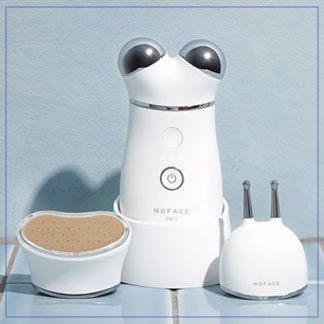
NuFACE Pro Microcurrent
NuFACE offers a non-surgical option that is FDA-cleared, aesthetician-created, and proven to help minimize the look of saggy skin in the neck area and face. The NuFACE microcurrent face treatment is a non-invasive facial rejuvenation technique that uses low-level electrical currents to stimulate facial muscles and improve skin tone and texture. The device delivers microcurrents, which are gentle electrical impulses that mimic the body’s natural electrical currents.
During a NuFACE treatment session, a conductive gel is applied to the skin, and the NuFACE device is then glided over specific areas of the face using gentle, upward motions. The microcurrents emitted by the device penetrate the skin and stimulate the facial muscles, causing them to contract and tighten.
The benefits of NuFACE microcurrent treatment may include:
- Improved facial contouring: By toning and lifting the facial muscles, NuFACE can help enhance facial contours and reduce the appearance of sagging or drooping skin.
- Reduction of fine lines and wrinkles: The stimulation of collagen and elastin production induced by microcurrents can lead to smoother, firmer skin and a reduction in the appearance of fine lines and wrinkles.
- Increased circulation: Microcurrents can help improve blood flow to the skin, which may promote a healthier complexion and a more radiant glow.
- Enhanced product absorption: The microcurrents can also help improve the penetration of skincare products into the skin, allowing for better absorption of active ingredients and maximizing their effectiveness.
The NuFACE microcurrent treatment might not be for you if you have any of the following:
- Pregnancy: While there is limited research on the safety of microcurrent treatment during pregnancy, it is generally recommended to avoid the procedure during pregnancy due to potential risks to the fetus.
- Pacemakers or other electronic implants: Individuals with pacemakers, defibrillators, or other electronic implants should avoid microcurrent treatment, as the electrical currents used in the procedure may interfere with the functioning of these devices.
- Metal implants or plates: Microcurrent treatment should not be performed on areas of the face with metal implants, plates, or screws, as the electrical currents may cause discomfort or injury.
- Epilepsy or seizures: Microcurrent treatment may involve electrical stimulation, which can trigger seizures in individuals with a history of epilepsy or other seizure disorders. It’s essential to discuss any seizure disorders or concerns with your healthcare provider before undergoing the treatment.
- Open wounds or lesions: Microcurrent treatment should not be performed on areas of the skin with open wounds, cuts, abrasions, or other lesions, as it may increase the risk of infection and interfere with the healing process.
- Recent cosmetic injections or surgeries: Individuals who have recently undergone cosmetic injections (such as botox or fillers) or surgical procedures (such as facelifts) may need to wait until the healing process is complete before undergoing microcurrent treatment. It’s essential to consult with your healthcare provider or surgeon for guidance on the appropriate timing for the procedure.
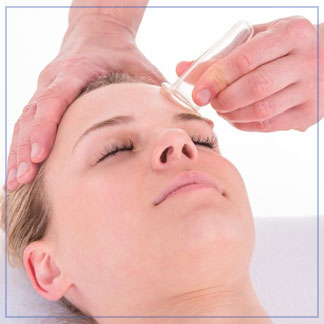
Facial Cupping
During a facial cupping session, our esthetician applies a small amount of oil or serum to the skin to create a seal between the cup and the skin. The cups are then gently moved across the face and neck using gliding or pumping motions.
The benefits of facial cupping may include:
- Improved circulation: The suction created by the cups helps to increase blood flow to the skin, promoting a healthy complexion and a more radiant glow.
- Lymphatic drainage: Facial cupping can help stimulate the lymphatic system, aiding in the removal of toxins and reducing puffiness and swelling in the face.
- Relaxation of facial muscles: The gentle massage action of the cups can help to relax tense facial muscles, reducing the appearance of fine lines and wrinkles and promoting a more youthful appearance.
- Detoxification: Facial cupping can help to draw out impurities from the skin, leaving it feeling clean and refreshed.
Facial Cupping may not be for you if you have any of the following:
- Broken or irritated skin: Facial cupping should not be performed on areas of the skin with open wounds, cuts, abrasions, rashes, sunburns, or other irritations. Applying suction to broken skin can increase the risk of infection and interfere with the healing process.
- Active acne lesions: Facial cupping can potentially exacerbate active acne lesions or spread bacteria, leading to further breakouts. It’s typically best to avoid facial cupping if you have active acne or severe acne-prone skin.
- Sunburned skin: Sunburned skin is already inflamed and sensitive, and facial cupping can further irritate the skin and increase discomfort. It’s advisable to wait until the sunburn has healed before undergoing facial cupping.
- Thin or fragile skin: Individuals with thin, fragile, or easily bruised skin may be more prone to bruising or skin damage from facial cupping. It’s essential to proceed with caution and use gentle suction techniques for such individuals.
- Certain medical conditions: Individuals with certain medical conditions, such as blood clotting disorders, heart conditions, or cancer, may need to avoid facial cupping or seek clearance from a healthcare provider before undergoing the treatment. The suction used in facial cupping can affect blood circulation and may not be suitable for individuals with certain health concerns.
- Pregnancy: While facial cupping is generally considered safe during pregnancy, some practitioners may recommend avoiding treatment during the first trimester or consulting with a healthcare provider before undergoing the procedure.
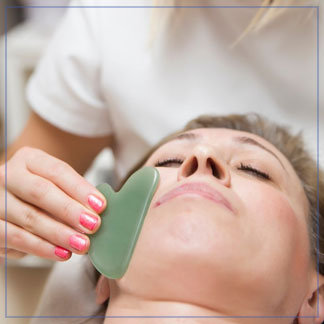
Gua Sha Facial Massage
A Gua Sha facial massage is a traditional Chinese skincare technique that involves using a smooth-edged tool, typically made of jade or rose quartz, to gently massage the face and neck. The name “Gua Sha” translates to “scraping” in Chinese, and the technique involves applying pressure and scraping motions along the skin’s surface.
During a Gua Sha facial massage, our esthetician glides the tool across the face and neck using various strokes and techniques. These strokes help stimulate circulation, promote lymphatic drainage, and encourage the release of tension in the facial muscles.
The benefits of a Gua Sha facial massage may include:
- Improved circulation: The gentle scraping motions of the Gua Sha tool can help increase blood flow to the skin, promoting a healthier complexion and a more radiant glow.
- Lymphatic drainage: Gua Sha massage can help stimulate the lymphatic system, aiding in the removal of toxins and reducing puffiness and swelling in the face.
- Relaxation of facial muscles: The massaging action of the Gua Sha tool can help relax tense facial muscles, reducing the appearance of fine lines and wrinkles and promoting a more youthful appearance.
- Enhanced absorption of skincare products: Gua Sha massage can help improve the penetration of skincare products into the skin, allowing for better absorption of active ingredients and maximizing their effectiveness.
You might not want a Gua Sha Facial Massage if you have any of the following:
- Broken or irritated skin: Gua sha should not be performed on areas of the skin with open wounds, cuts, abrasions, rashes, sunburns, or other irritations. Scraping the skin over broken skin can increase the risk of infection and interfere with the healing process.
- Active acne lesions: Gua sha can potentially exacerbate active acne lesions or spread bacteria, leading to further breakouts. It’s typically best to avoid gua sha if you have active acne or severe acne-prone skin.
- Thin or fragile skin: Individuals with thin, fragile, or easily bruised skin may be more prone to bruising or skin damage from gua sha. It’s essential to proceed with caution and use gentle scraping techniques for such individuals.
- Certain medical conditions: Individuals with certain medical conditions, such as blood clotting disorders, heart conditions, or cancer, may need to avoid gua sha or seek clearance from a healthcare provider before undergoing the treatment. The scraping action used in gua sha can affect blood circulation and may not be suitable for individuals with certain health concerns.
- Pregnancy: While gua sha is generally considered safe during pregnancy, some practitioners may recommend avoiding treatment during the first trimester or consulting with a healthcare provider before undergoing the procedure.
- Recent cosmetic injections or surgeries: Individuals who have recently undergone cosmetic injections (such as botox or fillers) or surgical procedures (such as facelifts) may need to wait until the healing process is complete before undergoing gua sha. It’s essential to consult with your healthcare provider or surgeon for guidance on the appropriate timing for the procedure.
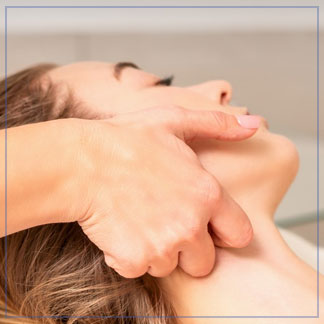
Facial Lymphatic Drainage
During our lymphatic drainage facial massage, our esthetician will use gentle, rhythmic strokes and light pressure to manually encourage lymphatic fluid to flow more freely through the lymphatic vessels and lymph nodes. The massage typically follows the natural pathways of the lymphatic system, which are located just beneath the surface of the skin.
The benefits of our lymphatic drainage facial massage may include:
- Reduction of puffiness and swelling: By promoting the movement of lymphatic fluid, the massage can help reduce fluid retention and alleviate puffiness or swelling in the face and neck.
- Detoxification: Lymphatic drainage massage can help eliminate toxins and waste products from the skin, leaving it feeling refreshed and rejuvenated.
- Improved circulation: The massage techniques used in lymphatic drainage can help stimulate blood flow to the skin, promoting a healthier complexion and a more radiant glow.
- Relaxation and stress relief: The gentle, soothing nature of lymphatic drainage massage can help promote relaxation and reduce stress levels, leading to an overall sense of well-being.
You might not want to have a Facial Lymphatic Drainage massage if you have any of the following:
- Active infections: Individuals with active infections, such as colds, flu, or skin infections, should avoid lymphatic drainage facial massage. Massaging the face during an active infection can potentially spread the infection or exacerbate symptoms.
- Open wounds or lesions: Lymphatic drainage facial massage should not be performed on areas of the face with open wounds, cuts, abrasions, or other lesions. Massaging over open wounds can increase the risk of infection and interfere with the healing process.
- Recent cosmetic injections or surgeries: Individuals who have recently undergone cosmetic injections (such as botox or fillers) or surgical procedures (such as facelifts) may need to wait until the healing process is complete before undergoing lymphatic drainage facial massage. It’s essential to consult with your healthcare provider or surgeon for guidance on the appropriate timing for the massage.
- Cancer or lymphedema: Individuals with a history of cancer or lymphedema may need to avoid lymphatic drainage facial massage or seek clearance from a healthcare provider before undergoing the treatment. The massage may exacerbate symptoms or interfere with medical treatments.
- Certain medical conditions: Individuals with certain medical conditions, such as heart problems, blood clotting disorders, or severe skin conditions, may need to avoid lymphatic drainage facial massage or seek clearance from a healthcare provider before undergoing the treatment. The massage may exacerbate symptoms or pose risks for individuals with specific health concerns.
- Pregnancy: While lymphatic drainage facial massage is generally considered safe during pregnancy, some practitioners may recommend avoiding treatment during the first trimester or consulting with a healthcare provider before undergoing the massage.
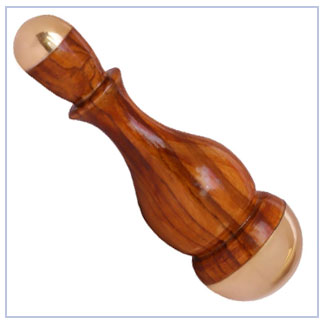
Kansa Wand Facial Massage
A Kansa wand facial massage is a traditional Ayurvedic skincare technique that involves using a small, dome-shaped tool made of Kansa metal, which is a blend of copper and tin. This metal is believed to have healing properties according to Ayurvedic principles.
During a Kansa wand facial massage, our esthetician gently massages the face and neck using the Kansa wand in circular or sweeping motions. The metal of the wand is believed to balance the body’s energies, stimulate acupressure points, and promote relaxation and rejuvenation of the skin.
The benefits of a Kansa wand facial massage may include:
- Improved circulation: The gentle massage motions of the Kansa wand can help stimulate blood flow to the skin, promoting a healthier complexion and a more radiant glow.
- Lymphatic drainage: Kansa wand massage can help stimulate the lymphatic system, aiding in the removal of toxins and reducing puffiness and swelling in the face.
- Relaxation and stress relief: The soothing nature of Kansa wand massage can help promote relaxation and reduce stress levels, leading to an overall sense of well-being.
- Balancing of energy: According to Ayurvedic principles, the metal of the Kansa wand is believed to balance the body’s energies and promote harmony and vitality.
A Kansa Wand Facial Massage might not be for you if you have any of the following:
- Metal allergies: Individuals with allergies to metals such as copper or tin should avoid Kansa wand facial massage, as the tool is made of Kansa metal, which contains these metals. Allergic reactions to metals can manifest as skin irritation, redness, itching, or swelling.
- Open wounds or lesions: Kansa wand facial massage should not be performed on areas of the face with open wounds, cuts, abrasions, or other lesions. Massaging over open wounds can increase the risk of infection and interfere with the healing process.
- Recent cosmetic injections or surgeries: Individuals who have recently undergone cosmetic injections (such as botox or fillers) or surgical procedures (such as facelifts) may need to wait until the healing process is complete before undergoing Kansa wand facial massage. It’s essential to consult with your healthcare provider or surgeon for guidance on the appropriate timing for the massage.
- Skin infections or active acne: Kansa wand facial massage should not be performed on areas of the face with active infections, such as bacterial, viral, or fungal infections, or active acne lesions. Massaging over infected or inflamed areas can exacerbate symptoms and spread bacteria.
- Certain medical conditions: Individuals with certain medical conditions, such as blood clotting disorders or severe skin conditions, may need to avoid Kansa wand facial massage or seek clearance from a healthcare provider before undergoing the treatment. The massage may exacerbate symptoms or pose risks for individuals with specific health concerns.
- Pregnancy: While Kansa wand facial massage is generally considered safe during pregnancy, some practitioners may recommend avoiding treatment during the first trimester or consulting with a healthcare provider before undergoing the massage.
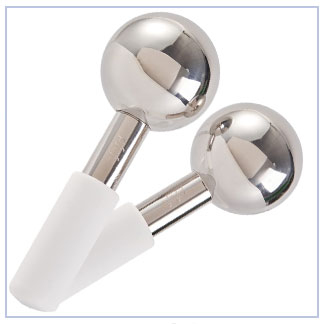
Ice Globes
The benefits of an ice globe treatment may include:
- Reduction of puffiness and swelling: The cold temperature of the globes helps to constrict blood vessels and reduce fluid retention in the skin, minimizing puffiness and swelling in the face and neck.
- Soothing of irritated skin: The cooling sensation of the globes can help to calm and soothe irritated or inflamed skin, making it a popular choice for individuals with conditions like rosacea or acne.
- Improvement of skin tone and texture: The massaging action of the globes helps to stimulate circulation and promote lymphatic drainage, resulting in a more even skin tone and smoother texture.
- Relaxation and stress relief: The gentle massage motions and cooling sensation of the globes can help to promote relaxation and reduce stress levels, leading to an overall sense of well-being.
The Ice Globe treatment might not be best for you if you have any of the following:
- Cold intolerance: Individuals who are extremely sensitive to cold temperatures or experience adverse reactions when exposed to cold may not tolerate an ice globe facial massage well.
- Skin conditions: Individuals with certain skin conditions, such as rosacea, eczema, or dermatitis, may experience increased sensitivity or irritation from an ice globe facial massage.
- Broken or irritated skin: Ice globe facial massage should not be performed on areas of the face with open wounds, cuts, abrasions, rashes, sunburns, or other irritations. Massaging over broken skin can increase the risk of infection and interfere with the healing process.
- Active acne lesions: An ice globe facial massage can potentially exacerbate active acne lesions or spread bacteria, leading to further breakouts. It’s typically best to avoid the treatment if you have active acne or severe acne-prone skin.
- Allergic reactions: Individuals with allergies to materials used in the construction of the ice globes, such as certain plastics or metals, should avoid ice globe facial massage to prevent allergic reactions.
- Pregnancy: While ice globe facial massage is generally considered safe during pregnancy, some practitioners may recommend avoiding treatment during the first trimester or consulting with a healthcare provider before undergoing the massage.
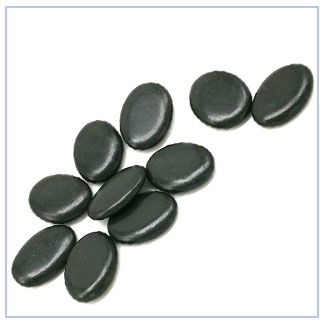
Cold or Hot Stones
Using hot or cold stones as part of a facial is a therapeutic technique that involves the use of smooth stones to massage the face and neck. The stones are typically made of marble or volcanic basalt and are heated or cooled to a comfortable temperature before use. They are then gently glided across the skin in a series of rhythmic motions.
The benefits of a cold stone facial massage may include:
- Reduction of puffiness and swelling: The cold temperature of the stones can help to constrict blood vessels and reduce fluid retention in the skin, minimizing puffiness and swelling in the face and neck.
- Soothing of irritated skin: The cooling sensation of the stones can help to calm and soothe irritated or inflamed skin, making it a popular choice for individuals with conditions like rosacea or acne.
- Stimulation of circulation: While the cold temperature initially constricts blood vessels, the massage motions of the stones help to stimulate circulation, promoting a healthy complexion and a more radiant glow.
- Relaxation and stress relief: The gentle massage motions and cooling sensation of the stones can help to promote relaxation and reduce stress levels, leading to an overall sense of well-being.
The benefits of a hot stone facial massage may include:
- Relaxation of facial muscles: The warmth of the stones helps to relax tense facial muscles, reducing the appearance of fine lines and wrinkles and promoting a more youthful appearance.
- Stimulation of circulation: The heat from the stones helps to dilate blood vessels and increase blood flow to the skin, promoting a healthy complexion and a more radiant glow.
- Detoxification: The heat from the stones can help to open pores and stimulate the release of toxins from the skin, leaving it feeling clean and refreshed.
- Stress relief: The gentle massage motions and warmth of the stones can help to promote relaxation and reduce stress levels, leading to an overall sense of well-being.
You might not want to add a cold stone facial massage to your service if you have any of the following:
- Cold intolerance: Individuals who are extremely sensitive to cold temperatures or experience adverse reactions when exposed to cold may not tolerate a cold stone facial massage well.
- Skin conditions: Individuals with certain skin conditions, such as rosacea, eczema, or dermatitis, may experience increased sensitivity or irritation from a cold stone facial massage. It’s essential to assess the skin’s condition and proceed with caution in such cases.
- Broken or irritated skin: A cold stone facial massage should not be performed on areas of the face with open wounds, cuts, abrasions, rashes, sunburns, or other irritations. Massaging over broken skin can increase the risk of infection and interfere with the healing process.
- Allergic reactions: Individuals with allergies to materials used in the construction of the stones or any substances applied to the skin during the massage should avoid a cold stone facial massage to prevent allergic reactions.
- Pregnancy: While a cold stone facial massage is generally considered safe during pregnancy, some practitioners may recommend avoiding treatment during the first trimester or consulting with a healthcare provider before undergoing the massage.
- Recent cosmetic injections or surgeries: Individuals who have recently undergone cosmetic injections (such as botox or fillers) or surgical procedures (such as facelifts) may need to wait until the healing process is complete before undergoing cold stone facial massage. It’s essential to consult with your healthcare provider or surgeon for guidance on the appropriate timing for the massage.
You might not want to add a hot stone facial massage to your service if you have any of the following:
- Heat intolerance: Individuals who are extremely sensitive to heat or experience adverse reactions when exposed to heat may not tolerate a hot stone facial massage well.
- Skin conditions: Individuals with certain skin conditions, such as rosacea, eczema, or dermatitis, may experience increased sensitivity or irritation from a hot stone facial massage. The heat from the stones can exacerbate inflammation and discomfort.
- Broken or irritated skin: A hot stone facial massage should not be performed on areas of the face with open wounds, cuts, abrasions, rashes, sunburns, or other irritations. Massaging over broken skin can increase the risk of infection and interfere with the healing process.
- Allergic reactions: Individuals with allergies to materials used in the construction of the stones or any substances applied to the skin during the massage should avoid hot stone facial massage to prevent allergic reactions.
- Pregnancy: While a hot stone facial massage is generally considered safe during pregnancy, some practitioners may recommend avoiding treatment during the first trimester or consulting with a healthcare provider before undergoing the massage. It’s essential to avoid excessive heat exposure during pregnancy, especially in the first trimester, to prevent potential risks to the fetus.
- Recent cosmetic injections or surgeries: Individuals who have recently undergone cosmetic injections (such as botox or fillers) or surgical procedures (such as facelifts) may need to wait until the healing process is complete before undergoing a hot stone facial massage. It’s essential to consult with your healthcare provider or surgeon for guidance on the appropriate timing for the massage.
